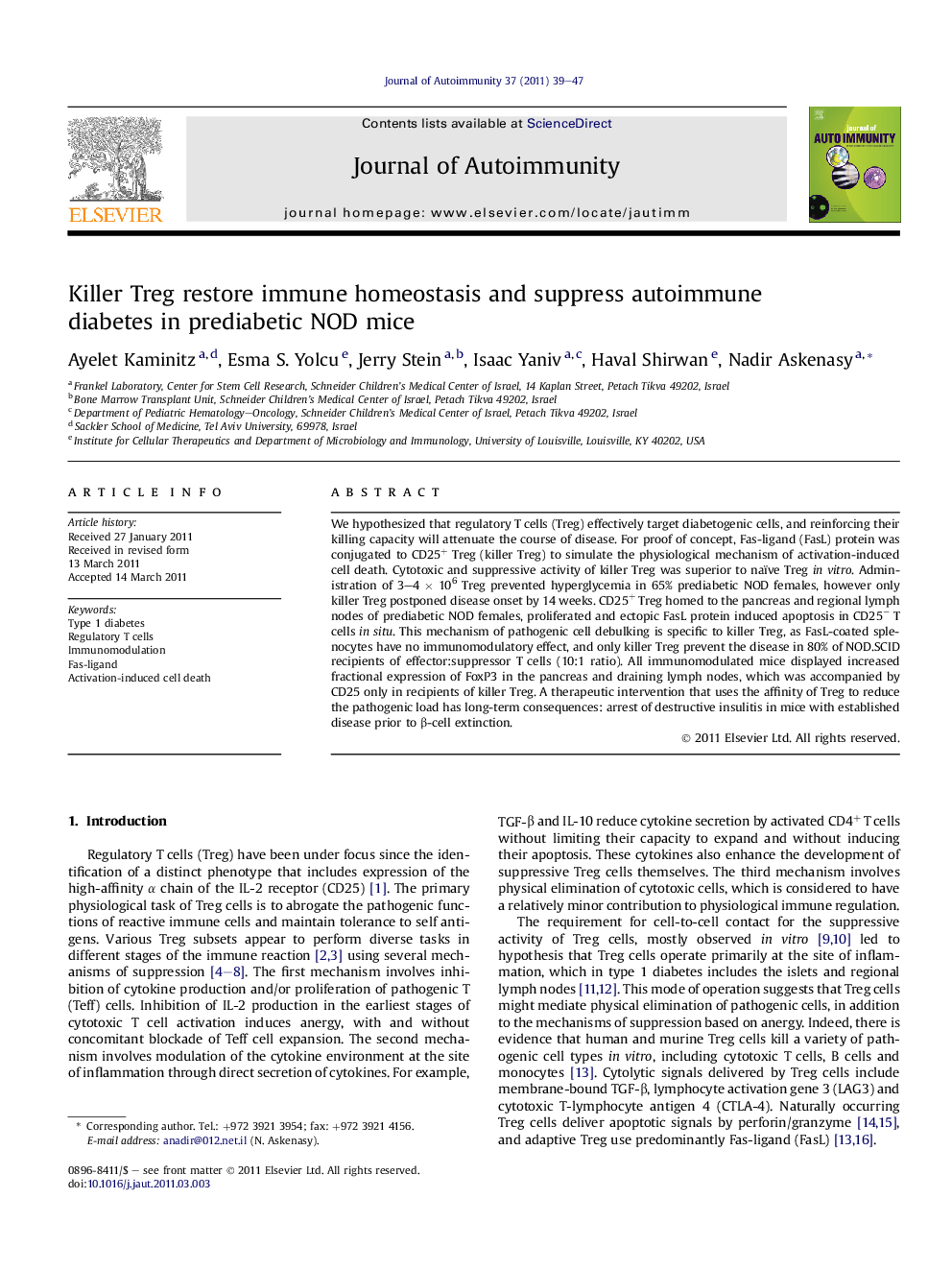| Article ID | Journal | Published Year | Pages | File Type |
|---|---|---|---|---|
| 3368024 | Journal of Autoimmunity | 2011 | 9 Pages |
We hypothesized that regulatory T cells (Treg) effectively target diabetogenic cells, and reinforcing their killing capacity will attenuate the course of disease. For proof of concept, Fas-ligand (FasL) protein was conjugated to CD25+ Treg (killer Treg) to simulate the physiological mechanism of activation-induced cell death. Cytotoxic and suppressive activity of killer Treg was superior to naïve Treg in vitro. Administration of 3–4 × 106 Treg prevented hyperglycemia in 65% prediabetic NOD females, however only killer Treg postponed disease onset by 14 weeks. CD25+ Treg homed to the pancreas and regional lymph nodes of prediabetic NOD females, proliferated and ectopic FasL protein induced apoptosis in CD25− T cells in situ. This mechanism of pathogenic cell debulking is specific to killer Treg, as FasL-coated splenocytes have no immunomodulatory effect, and only killer Treg prevent the disease in 80% of NOD.SCID recipients of effector:suppressor T cells (10:1 ratio). All immunomodulated mice displayed increased fractional expression of FoxP3 in the pancreas and draining lymph nodes, which was accompanied by CD25 only in recipients of killer Treg. A therapeutic intervention that uses the affinity of Treg to reduce the pathogenic load has long-term consequences: arrest of destructive insulitis in mice with established disease prior to β-cell extinction.
